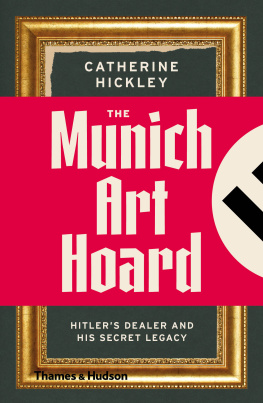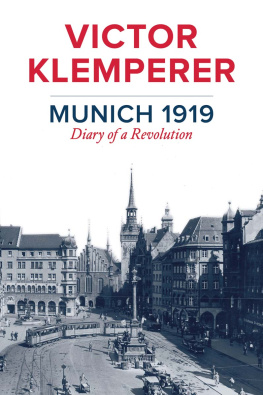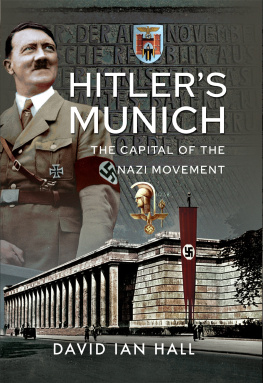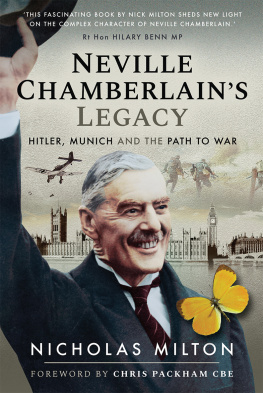Catherine Hickley - The Munich art hoard : Hitlers dealer and his secret legacy
Here you can read online Catherine Hickley - The Munich art hoard : Hitlers dealer and his secret legacy full text of the book (entire story) in english for free. Download pdf and epub, get meaning, cover and reviews about this ebook. year: 2016, genre: Non-fiction. Description of the work, (preface) as well as reviews are available. Best literature library LitArk.com created for fans of good reading and offers a wide selection of genres:
Romance novel
Science fiction
Adventure
Detective
Science
History
Home and family
Prose
Art
Politics
Computer
Non-fiction
Religion
Business
Children
Humor
Choose a favorite category and find really read worthwhile books. Enjoy immersion in the world of imagination, feel the emotions of the characters or learn something new for yourself, make an fascinating discovery.
- Book:The Munich art hoard : Hitlers dealer and his secret legacy
- Author:
- Genre:
- Year:2016
- Rating:3 / 5
- Favourites:Add to favourites
- Your mark:
- 60
- 1
- 2
- 3
- 4
- 5
The Munich art hoard : Hitlers dealer and his secret legacy: summary, description and annotation
We offer to read an annotation, description, summary or preface (depends on what the author of the book "The Munich art hoard : Hitlers dealer and his secret legacy" wrote himself). If you haven't found the necessary information about the book — write in the comments, we will try to find it.
The Munich art hoard : Hitlers dealer and his secret legacy — read online for free the complete book (whole text) full work
Below is the text of the book, divided by pages. System saving the place of the last page read, allows you to conveniently read the book "The Munich art hoard : Hitlers dealer and his secret legacy" online for free, without having to search again every time where you left off. Put a bookmark, and you can go to the page where you finished reading at any time.
Font size:
Interval:
Bookmark:

About the Author
Catherine Hickley is the worlds leading journalist in the field of Nazi-looted art and has published dozens of articles on the subject. In a sixteen-year career at Bloomberg News, she reported on arts and culture from Berlin for eight years, following stints as a reporter covering German politics, as Berlin bureau chief and as the editor managing European government news. She previously worked as a journalist in Switzerland and Hungary. A graduate in French and German from London University, she witnessed the fall of the Berlin Wall from the other side of the Iron Curtain as an English teacher in East Germany in 1989.
Other titles of interest published by
Thames & Hudson include:
Rendez-vous with Art
Paris Between the Wars
The Lives of Lee Miller
The Weimar Years
www.thamesandhudson.com
www.thamesandhudsonusa.com

First published in the United Kingdom in 2015 as
The Munich Art Hoard: Hitler's Dealer and His Secret Legacy
ISBN 978-0-500-25215-4
by Thames & Hudson Ltd, 181a High Holborn, London WC1V 7QX
The Munich Art Hoard: Hitler's Dealer and His Secret Legacy
2015 Catherine Hickley
This electronic version first published in 2015 by
Thames & Hudson Ltd, 181a High Holborn, London WC1V 7QX
To find out about all our publications, please visit
www.thamesandhudson.com
All Rights Reserved. No part of this publication may be reproduced or transmitted in any form or by any means, electronic or mechanical, including photocopy, recording or any other information storage and retrieval system, without prior permission in writing from the publisher.
ISBN 978-0-500-77309-3
Contents
Prologue
Cornelius Gurlitt, a white-haired, frail old man with a ghostly pallor and watery faraway eyes, sat in a corner of his Munich apartment. It was February 2012.
Teams of officials were combing through his reclusive life, invading his private sphere and packing his most treasured possessions into cardboard boxes to take them away.
They stayed four days. The Max Liebermann painting of two riders on a beach was unhooked from the wall, the Chagall vanished from the cupboard, the Matisse in the drawer disappeared into a box.
Gone, too, were the reams of drawings and prints, his favourites that he kept in a small suitcase. He had spent many evenings poring over those images by Pablo Picasso, Edgar Degas, Paul Czanne, Auguste Rodin, Edvard Munch, Franz Marc and Otto Dix, the yellowed paper recalling a glittering era of creativity and inspiration, of danger and decadence.
They were more than just possessions. He talked to them. They were a substitute for family, friends, lovers. Gurlitt had only his artworks, and they were the only company he needed in his waning years. His parents had died half a century ago. His sister, the only person left to whom he was close, was dying of cancer.
Now the pictures were gone, too, and he felt more bereft than after the death of his parents. He wished his sister could help. Benita would have known how to stop these strangers from packing their fathers precious legacy into boxes and carting it off.
Couldnt they have waited until Cornelius was dead too?
He blamed himself, a little. His father had rescued the pictures from the Nazis, the bombs, the fire, the Red Army. And now he, Cornelius, had failed to defend them against these strangers who were swarming through his apartment.
His property! How dare they? What did they want from him? He was no criminal. They told him the art was stolen by the Nazis. What nonsense! It was saved from the Nazis.
He was determined to get his pictures back, as many of them as he could. He would not give them up.
This strange and lonely old man only ever spoke to the public once, in an interview with Germanys Der Spiegel magazine. All he wanted was to live in peace and quiet with his art. But it was not to be: he and his collection captured the worlds imagination and provoked a debate about a Nazi crime that has yet to be redressed. Some of the artworks hidden for decades in his apartment were stolen from Jews who lost everything under Adolf Hitler their livelihoods, their identities, their homes, their families and, in some cases, their lives.
The last years of Corneliuss reclusive life were to prove anything but peaceful. The prosecutor opened a criminal investigation against him, journalists besieged his home, and he was inundated with claims from the heirs of Jewish collectors who were persecuted and expropriated more than seventy years ago.
He became a polarizing figure in a complex legal debate, sparked disbelief, outrage and sympathy, and hammered home to Germany the ongoing national responsibility to address the darkest era of its history. Most importantly, he raised awareness of the thousands of artworks lurking in both private and public collections worldwide that have never been returned to their rightful owners what Ronald Lauder, president of the World Jewish Congress, has termed the last prisoners of World War II. As awareness grew that Cornelius would probably get to keep the artworks in a German court of law, the deficiencies of the legal framework to right this historic wrong became apparent to all.
Considering he rarely left his flat, Cornelius made quite an impact.
From his hospital sickbed in the last weeks of his life, under an enormous amount of public pressure, Cornelius set a moral benchmark that many museum directors, art dealers and private collectors would do well to follow. He pledged to apply the international Washington Principles in addressing the heirs claims. These non-binding guidelines on handling Nazi-looted art in public collections were endorsed in 1998 by forty-four governments. All too often, they are ignored or bypassed by museums and politicians. Private collectors, with the notable exception of Cornelius Gurlitt, are not bound by them at all.
For the families who were robbed, failure to address the crimes of the Nazis perpetuates the injustice they suffered. No one can bring back the millions who died in the Holocaust. Looted art, though, can and should still be returned to the families it was stolen from.
Two Riders on the Beach
November 2013
Lothar Fremy, a tall, unflappable north German lawyer who moved to Berlin thirty years ago and stayed, watched live on television as the Augsburg state prosecutor Reinhard Nemetz presented his spectacular find to the world. Cornelius Gurlitts cache of more than 1,200 paintings, drawings, lithographs and prints included some previously unknown works, among them a Marc Chagall gouache and an Otto Dix self-portrait. The list reads like an art Whos Who: Pablo Picasso, Paul Czanne, Edgar Degas, Henri Matisse, Franz Marc, Henri de Toulouse-Lautrec, Oskar Kokoschka, Gustave Courbet, Paul Klee, Ernst Ludwig Kirchner, Albrecht Drer, Canaletto, Jean-Auguste-Dominique Ingres all found among jam jars, fruit-juice cartons, boxes of pasta and tins of food, some of which had a best-before date in the last century.
Despite the debris in Gurlitts apartment, the artworks were stored correctly according to Meike Hoffmann, the Berlin art historian investigating the treasure trove. They were dirty, many were frameless, but they were undamaged. To stand in front of pictures that were long believed lost or destroyed of course gives one an incredible feeling of joy, Hoffmann said at the Augsburg news conference.
Next pageFont size:
Interval:
Bookmark:
Similar books «The Munich art hoard : Hitlers dealer and his secret legacy»
Look at similar books to The Munich art hoard : Hitlers dealer and his secret legacy. We have selected literature similar in name and meaning in the hope of providing readers with more options to find new, interesting, not yet read works.
Discussion, reviews of the book The Munich art hoard : Hitlers dealer and his secret legacy and just readers' own opinions. Leave your comments, write what you think about the work, its meaning or the main characters. Specify what exactly you liked and what you didn't like, and why you think so.









